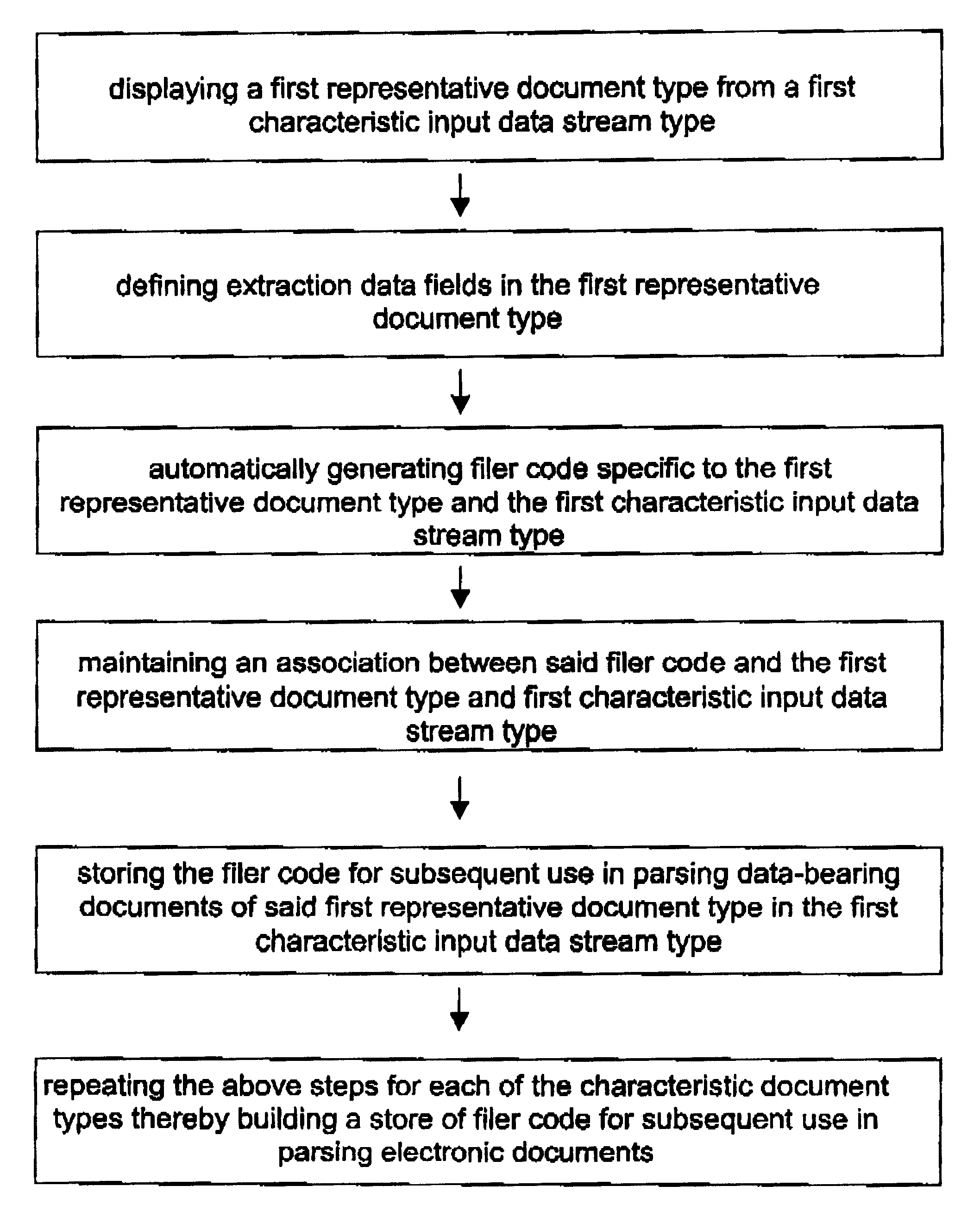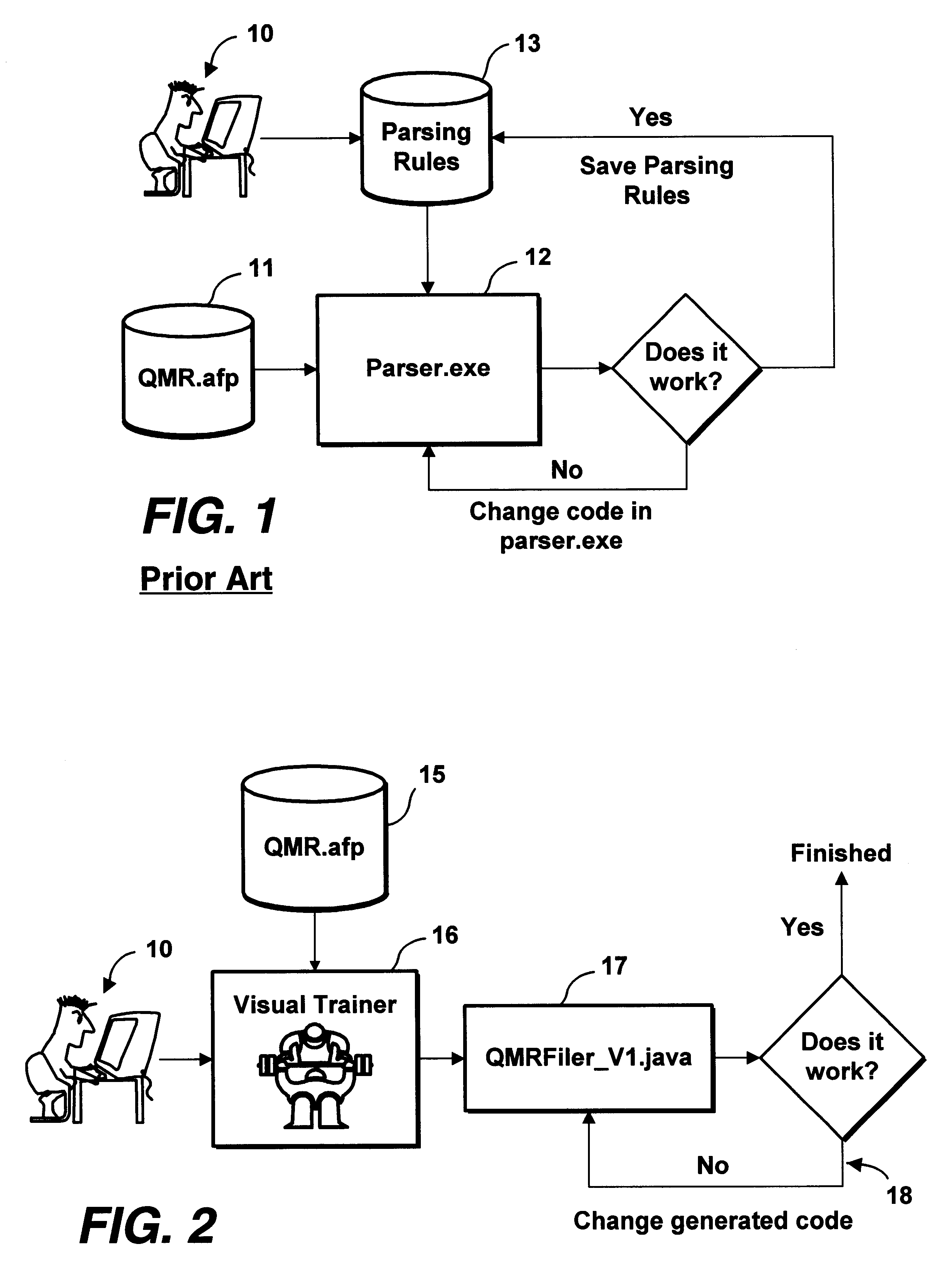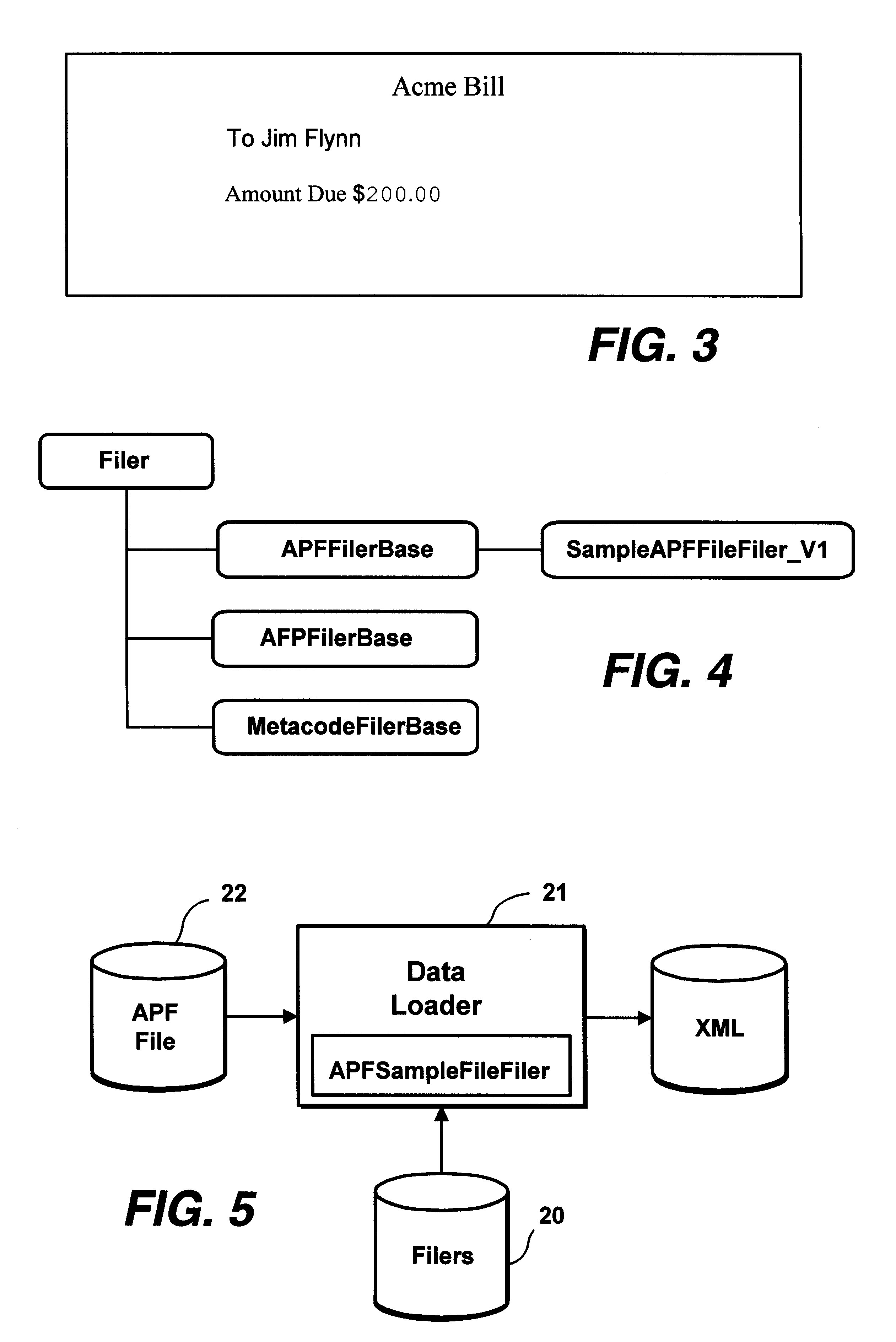Method facilitating data stream parsing for use with electronic commerce
- Summary
- Abstract
- Description
- Claims
- Application Information
AI Technical Summary
Benefits of technology
Problems solved by technology
Method used
Image
Examples
Embodiment Construction
monolithic parsers.
[0017]FIG. 2 is a high-level logic flow diagram illustrating the parsing approach according to the invention.
[0018]FIG. 3 is the first page of a print data stream output in a simple example.
[0019]FIG. 4 shows a filer class hierarchy.
[0020]FIG. 5 is a block diagram showing the conversion of APF documents to XML documents.
[0021]FIG. 6 is a flow diagram of a preferred embodiment.
[0022]FIG. 7 is a flow diagram of a preferred embodiment.
DETAILED DESCRIPTION OF ILLUSTRATIVE EMBODIMENTS
[0023]FIG. 2 illustrates the logical process flow for creating a filer for the QMR.afp document file according to the invention. User 10 starts by opening the QMR.afp file from document repository 15 in an application referred to herein as a visual trainer 16. Visual trainer 16 enables user 10 to define the parsing rules for a particular document (an activity sometimes referred to as training a document) and generates the initial filer code for that document. Visual trainer 16 displays the...
PUM
 Login to View More
Login to View More Abstract
Description
Claims
Application Information
 Login to View More
Login to View More - R&D
- Intellectual Property
- Life Sciences
- Materials
- Tech Scout
- Unparalleled Data Quality
- Higher Quality Content
- 60% Fewer Hallucinations
Browse by: Latest US Patents, China's latest patents, Technical Efficacy Thesaurus, Application Domain, Technology Topic, Popular Technical Reports.
© 2025 PatSnap. All rights reserved.Legal|Privacy policy|Modern Slavery Act Transparency Statement|Sitemap|About US| Contact US: help@patsnap.com



